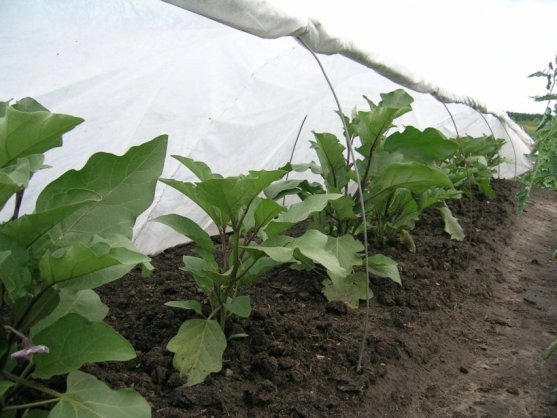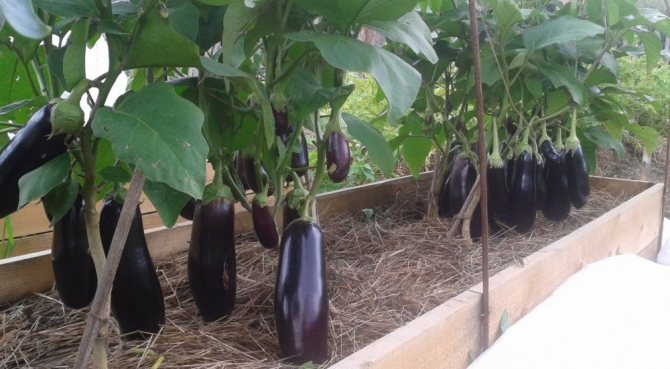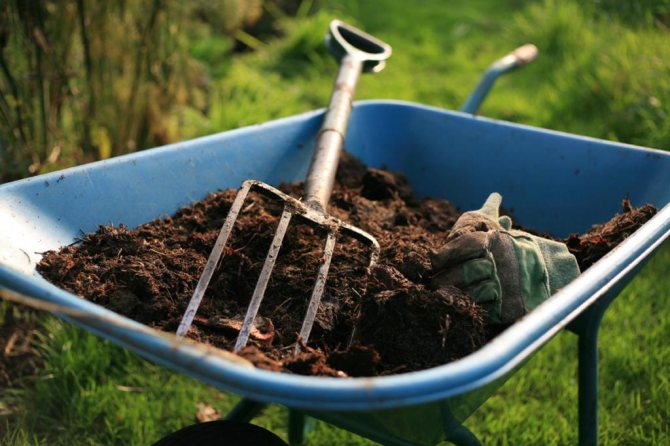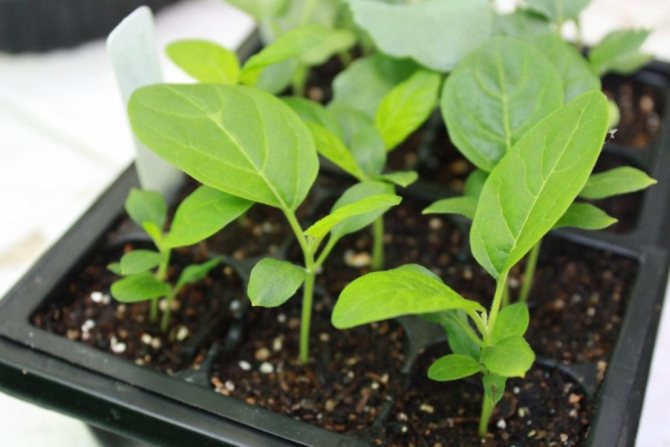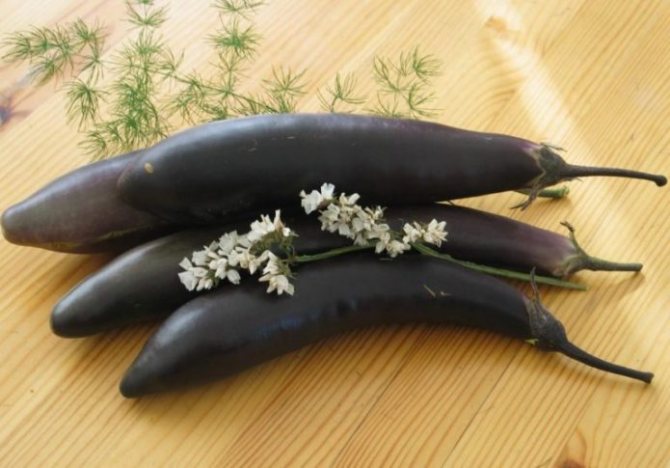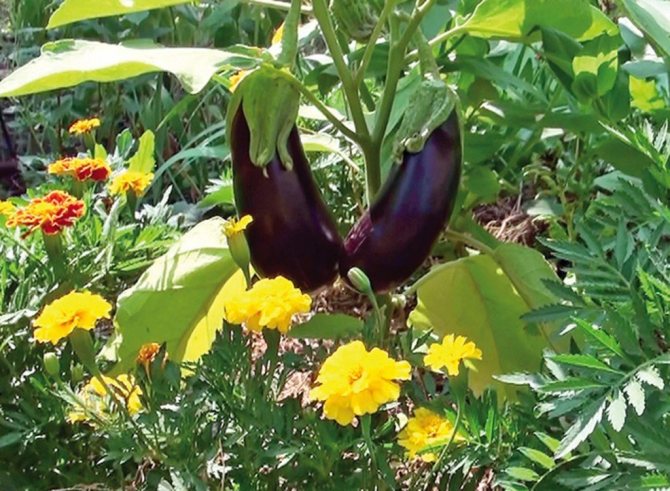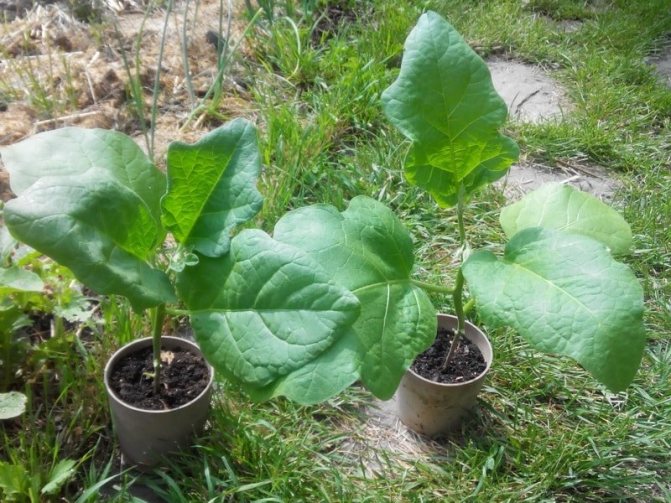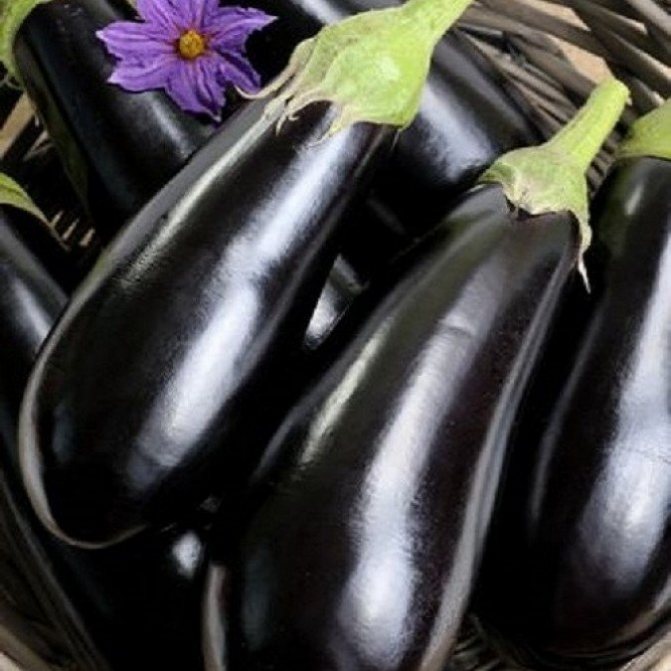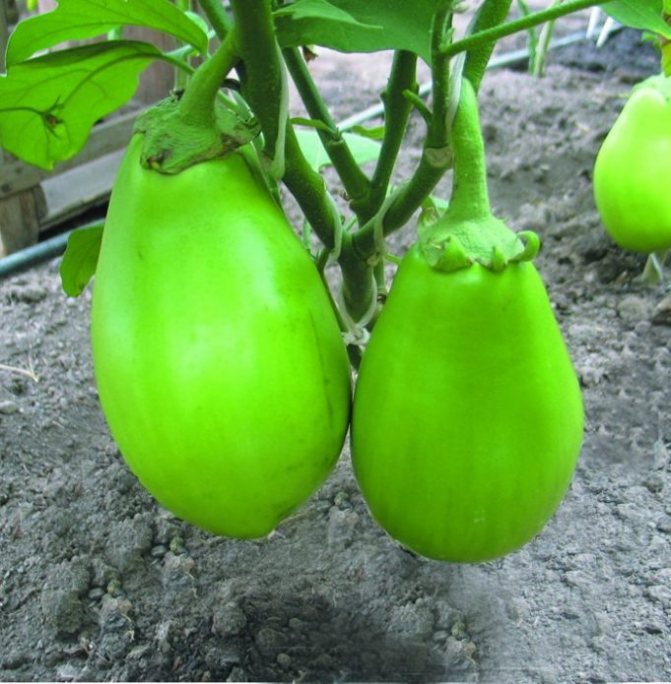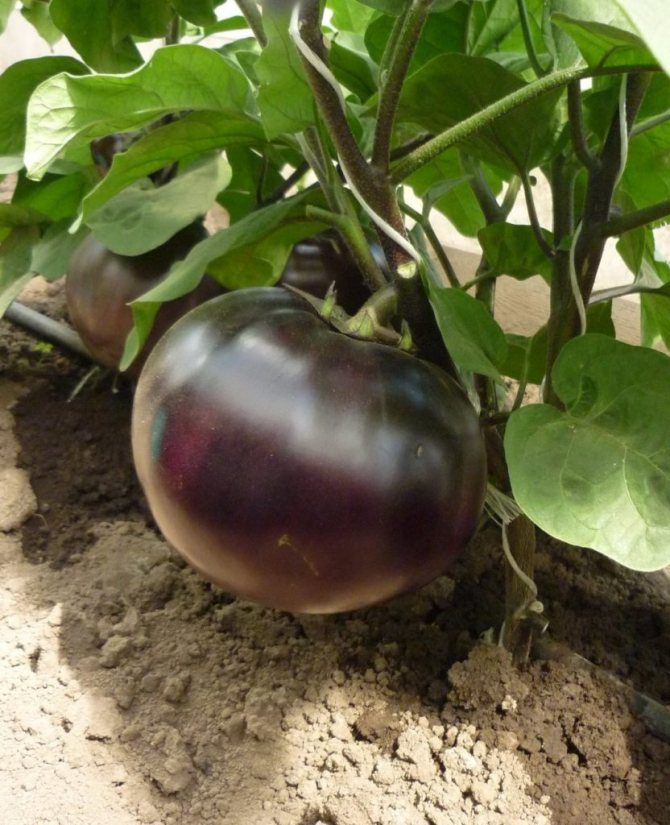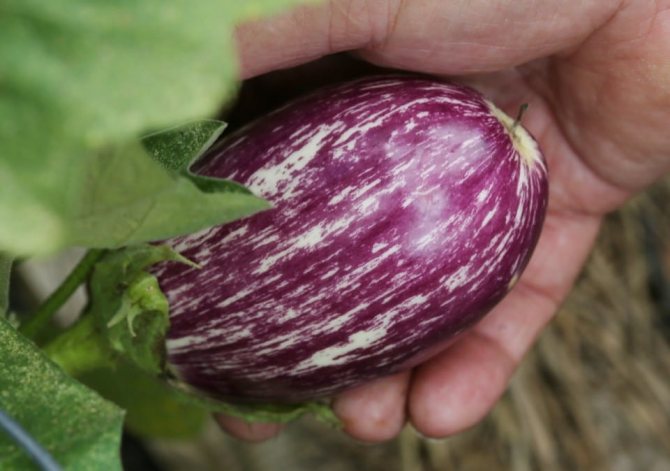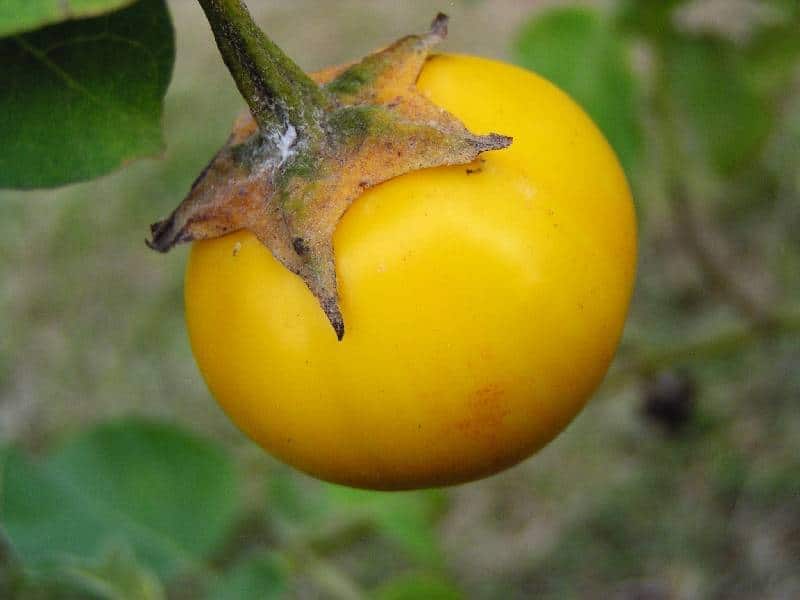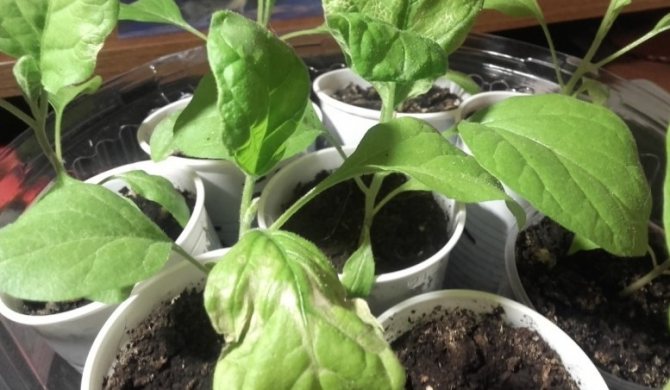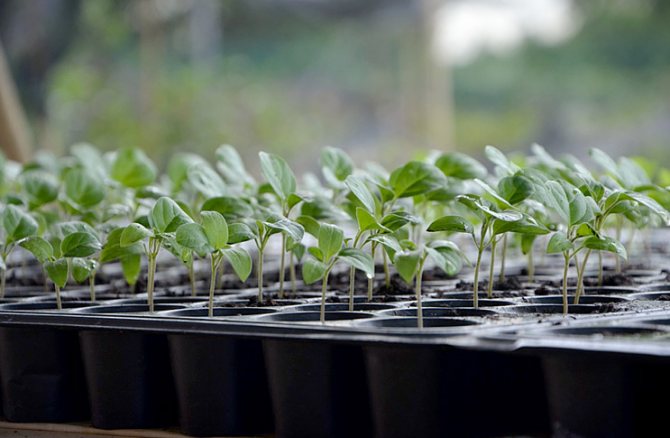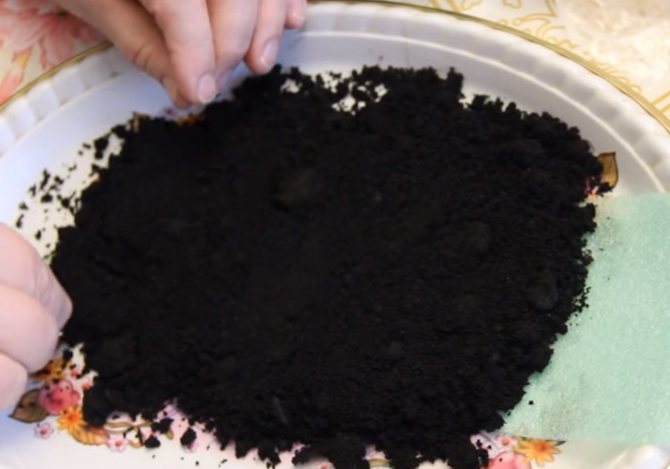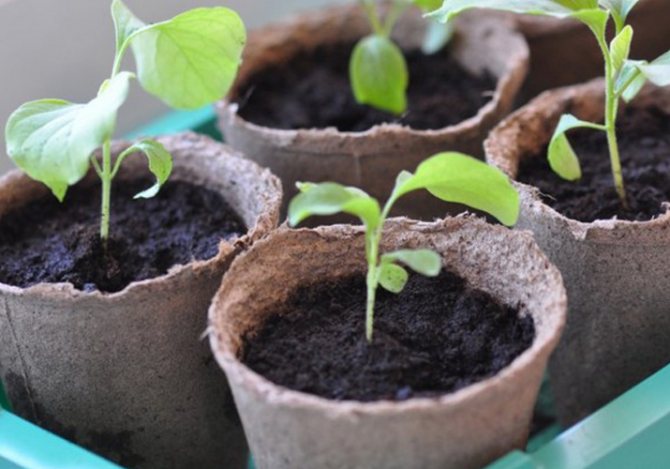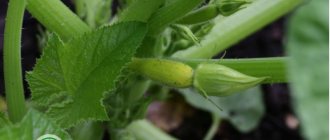Eggplants came to Europe in the XIV century - merchants from India brought the curiosity, and in the XVII and Russia got acquainted with this vegetable. The mild climate of the Mediterranean coast helped the eggplant get used to the national cuisines of these countries.
Originally from India and China, the eggplant plant is very temperature-sensitive. They began to receive these vegetables in a greenhouse in our area a long time ago. However, the possibility of growing eggplants in the open field has always been of interest to gardeners and breeders.
Where can you grow eggplant outdoors

Growing eggplant outdoors in our climatic conditions is somewhat different from growing other crops. First, the most important special condition is the soil. Eggplants can only be grown in fertile soil, prepared in advance, with a light, very loose structure. These vegetables do not tolerate frost at all, if the temperature often drops below 20 degrees, then pollination may stop without even starting. They also cannot stand drought, the flowers may fall off or the fruit deforms.
Choosing the right place
In the place where it is planned to plant eggplants, predecessors from the Solanaceae family should not grow earlier. Such plants can grow back in the same place only after 3-4 years. Preference should be given to the beds on which they were grown in the previous year:
- cucumbers;
- cabbage;
- peas.
Note! You can sow and plant eggplants after beets, but the soil should be well fertilized and loosened.
First you need to carefully study what eggplants love. These are heat-loving and light-loving plants, therefore, you should choose exclusively the southern side for the formation of beds. This culture is afraid of the winds, so the designated area must be protected. For example, with:
- garden plantings (tree line);
- buildings;
- artificial barrier (polycarbonate).
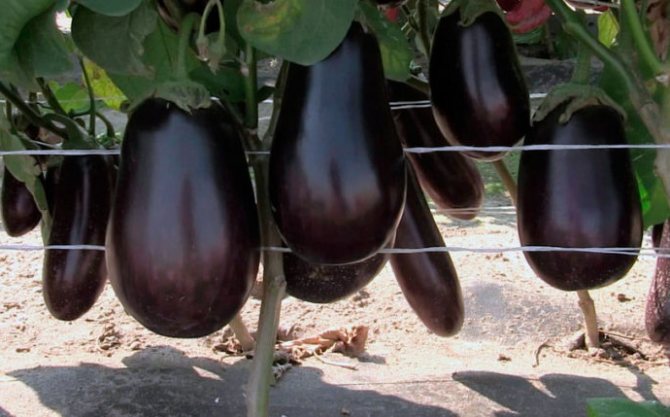

Eggplant in the vegetable garden
Landing in open ground: terms and basic rules
In our country, eggplants are grown only in seedlings, it is necessary to sow seeds already in the second half of March, so that by the end of May they have already formed a stable root system and at least 4-5 leaves. The transplant should be carried out after the establishment of stable warm weather and provided that the night temperature does not drop below 15 degrees. At first, it is best to cover it with a special protective film at night. Overexposing seedlings at home or in a greenhouse is also not recommended, because after the appearance of buds and ovaries, eggplants cannot get used to new conditions, and they will often get sick, or become food for insects, as a result of which they die.
Experienced gardening tips
Several recommendations for gardeners on how to grow eggplants. It is most preferable to plant young eggplants in cloudy weather or in the late afternoon. The planting time that suits best is the beginning of bud formation, the approximate age is two months.
Before planting, the seedlings are watered and freed from the containers where they germinated. The dimples are poured abundantly with warm water and the plant is carefully lowered into them. It is necessary to cover the remaining space with earth and compact with your hands.Then water again and top with a layer of peat or soil. It is not necessary to deeply deepen the plants, only up to a couple of the first leaves. The beds need to be protected from the sun for several days, creating a light shade so that the plants can more easily withstand the stress of replanting.
Eggplant growing schemes for drip irrigation are also slightly different. 1 drip tape is used if the beds are narrow, 2 drip tapes are placed on the sides of the middle row.
On a note! It is believed that for open ground, the optimal landing in two rows. Between plants - 50 cm, row spacing - 90-100 cm.
That's all you need to know about how to properly grow eggplants to get a big and tasty harvest.
Planting seedlings
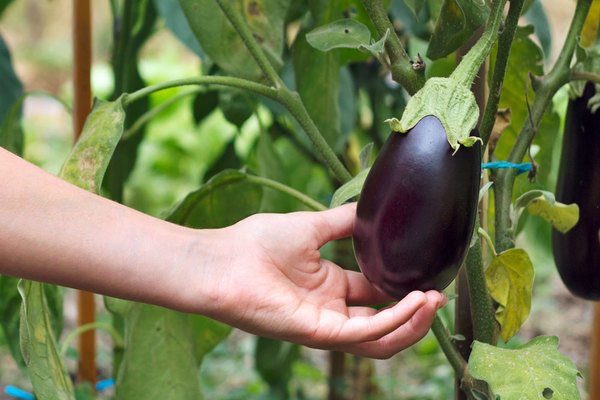

Once you have selected the right seeds for your climatic conditions, there are a number of procedures that need to be followed for better germination. First, it must be treated with potassium permanganate, soaked for 20 minutes, then rinsed. For better germination, the seeds can be placed in a solution of nitrofask (1 tsp for 1 liter of water 25-28 degrees), soak for a day. Immediately before planting, it is necessary to hold it in a humid and warm environment for 1-2 days. You can also apply the hardening procedure. To do this, we place and keep the seeds in the refrigerator for two days, then move them to another room, where the temperature is about 18 degrees for a day, then return them to the refrigerator. Such measures are needed so that, after germination, the sprouts take root better in the open field, even under unfavorable conditions they do not die.
The seeds can now be planted in containers. We fill the container with soil prepared in advance to a depth of more than half, we do not tamp anything, eggplants love loose soil, we sow seeds at a distance of 5 mm, we cover it with a layer of 1 cm, be sure to water it. We close it with a film or a bag, put it in a well-heated place, and as soon as we see the first shoots, we remove the shelter and move it to a cooler place, the temperature is about 18 degrees. After a week, we put it back in a warm, well-warmed place. After 5-6 leaves are formed, and it reaches a height of 10 cm, it can be transplanted into open ground. A week before transplanting, seedlings should be taken out into the street, on a balcony or greenhouse, but drafts and direct sunlight should be avoided at least for the first time.
The best place for eggplant in your garden is a place where light falls well, the earth warms up well, but drafts and winds are excluded. If possible, you can plant them next to small bushes. Of the predecessors, it is best to choose cabbage, perennials, cucumber and onions, but you cannot plant potatoes, tomatoes, physalis and peppers in place. Take care of choosing a place in advance, it is better to allocate places for planting crops in autumn, after harvest.
Eggplants love fertile, light-textured soil. It is important not to overdo it with organic fertilizers, otherwise, instead of a crop, you will only get tops, if acidification of the soil is present, then you can introduce dolomite flour or crushed lime.
In moderate doses, you can use manure, and necessarily rotted, and not fresh, with the calculation of 3-4 kg. for 1m2. You can take ready-made mineral fertilizers such as superphosphate, potassium or ammonium nitrate. The root system of eggplant develops exclusively in loose soil, you should not even try to grow them in clay, heavy soil. It is necessary to constantly loosen the soil, you can introduce peat, humus or sand, after thoroughly mixing it with the earth.
It is customary to plant all vegetable crops in the evening, it is possible in cloudy weather, but relatively warm. We dig holes at intervals of 23-30 cm for early ripening, 34-40 cm for late varieties, respectively. We leave 55-70 cm between the rows.It is better to choose the scheme from the instructions on the seed packaging, each variety has its own nuances.
The right eggplant bed
It is advisable to prepare a place for planting eggplants in the fall. Not just dig up, but add organic matter, peat, ash. During the autumn-winter period, the chemical composition of the beds will level out, soil microorganisms will create optimal conditions for eggplant seedlings.
The bed must be located in a sunny, windless place. It is very important to foresee the possibility of a film shelter in advance in order to safely plant seedlings as soon as they grow up to 10 centimeters. If your seedlings have already formed 3-4 pairs of true leaves, they can be planted in the garden.
If the seedlings were grown in plastic cassette containers, then on the eve of transplanting it does not need to be watered, despite all the recommendations. A dry earthen lump together with plant roots can be easily removed from the dishes without crumbling.
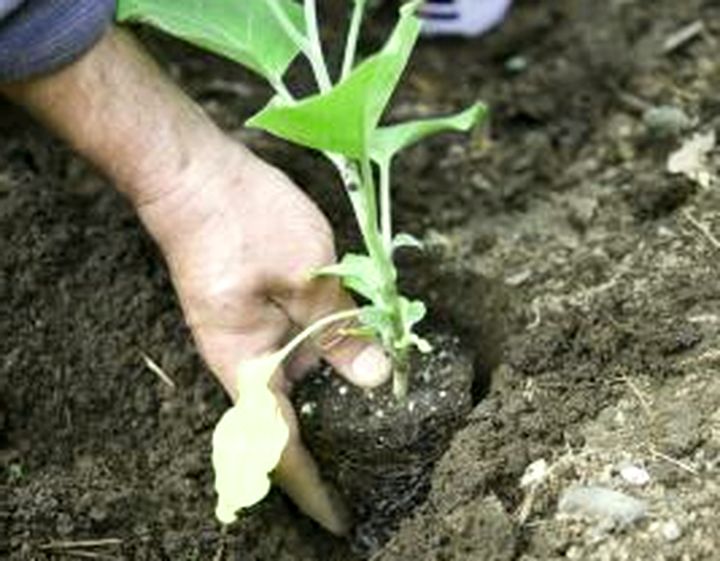

Care
As we have already said, eggplants are a very capricious culture, they get used to a new place hard, require maximum care, otherwise they will simply die or not take root at all. We start leaving immediately after transplanting into open ground. Watering should be abundant, twice a week, subject to dry and hot weather, if it rains, do not water. We focus on the condition of the soil. Water is only settled, warm, rain is best suited. If it is not possible to water several times a week, then it is better to pour more water, strictly at the root, at least once a week.
Eggplants are also picky about weather conditions, they do not like either heat or cold, the temperature should fluctuate from 22 to 26 degrees. In dry, hot weather, we make shades from improvised means, and at temperatures below 20 degrees at night, you need to cover with a film or other material for these purposes. When the growth of the plant reaches 30 cm, it is necessary to make a clothespin on top so that the shoots go on the sides, we leave only the healthiest of them, remove the rest. There is no need for pinning.
We weed once a week, along the way you need to loosen the soil, try to prevent the formation of lumps and crusts in the soil, the root system needs oxygen. Weeds also trap oxygen and can attract pests.
Disease prevention
It is important to treat the plant and soil with fungicidal preparations to avoid the appearance of fungus. The main causes of problems with growing eggplants are bacterial as well as viral diseases:
- mosaics (cucumber, tobacco, ordinary);
- stolbur;
- spotting;
- necrosis;
- rot (white and gray);
- blackleg;
- late blight.
This is a list of the main diseases of eggplant, which appear as a result of violation of the rules of agricultural technology. Preventive actions will help make plant maintenance easier. It all starts with preparing the seeds for sowing (hardening is described above). Immediately before sowing, the material must be pickled. To do this, he is immersed in a solution of potassium permanganate (pale color) for 20-25 minutes. Additionally, mail should be processed (warming up in the oven and processing with drugs).
Top dressing
Eggplants love fertile soil, they will have to be fed often. The first should be done after 20 days, then during the period of active growth (this is mid-July), the last dressing is done in the fall, during fruiting. As a top dressing, we choose fertilizers that contain phosphorus, it helps to develop the ovaries, nitrogen is useful at the beginning of growth for the formation of flowers, potassium is an indispensable assistant during the period of active growth of fruits, helps to form immunity to weather conditions, iron and manganese prolong the period of fruiting. You can simply buy all these elements in the form of ready-made fertilizers, such as the popular superphosphate, the equally well-known nitrofask. Ammonium sulfate and potassium nitrate can be used.
In rural areas, it is very popular to feed with manure or slurry.This species is suitable for the first and second feeding. The most important thing is that the manure should be rotted, prepared in advance, otherwise the excess nitrogen contained in the fresh manure can destroy the plant. You can mix it with poultry droppings or compost.
In addition to the usual types of feeding, there are also folk ones. Experienced gardeners use this method in conjunction with others. For example, mushroom infusion brings good results in the process of fruit ripening. We take ½ cup of dried mushrooms, pour 5 liters of warm water, insist for a day. The solution can also be made from wood ash, pour 2 glasses of ash with 5 liters of warm water. You can prepare a solution of yeast, take a package of yeast weighing 1 kg, fill it with a bucket of water, wait a day, then add water again. Pour this solution under the root of the plant.
You can also make fertilizers from a variety of plants. For example, you can brew dandelions. A glass of dandelions for 7 liters of water, and pour over the eggplant. We brew medicinal chamomile in 2 liters of water, wait a day, add another 9 liters. It is very popular to use eggshells as a top dressing, you can grind and sprinkle under the root, or make a solution and water.
Seed and soil preparation
Before planting seeds, they are immersed in water for 5 minutes. Grains that have settled to the bottom are considered viable. They are disinfected in a 1% solution of potassium permanganate for 20 minutes. Germination can be stimulated by soaking in aloe juice for a day or in a hot hydrogen peroxide solution for 10 minutes.
Soil preparation begins in the fall:
- remove weeds;
- clean the surface of the beds from the stems;
- spilled twice with clean water;
- carry out disinfection.
In a small area, they use preparations containing beneficial microorganisms:
- Baikal - EM-1 and EM-5;
- Baktofit;
- Phytocide M;
- Planzir;
- Alirin B;
- Fitosporin.
The solution or biofungicide is used 2 to 3 weeks before frost. In the spring, the procedure is repeated with the onset of heat. Chemicals are used as a last resort. Choose 3 - 4 hazard class. In autumn, a 3% solution of Bordeaux liquid is used. In April, the top layer is treated with copper oxychloride or Oxyhom.
Best predecessors for eggplant:
- peas;
- beans;
- cucumber;
- onion;
- carrot;
- cabbage.
It is allowed to plant after carrots and garlic. You can not use beds after nightshade. Crop rotation should be observed: the optimal interval between plantings in the same land is 3-4 seasons.
The culture requires light and fertile soil, it is mixed with:
- turf;
- sawdust;
- peat;
- humus;
- ash.
Annual disinfection of the earth leads to the elimination of fungal diseases. The main thing is to follow the recommendations and not skip the procedures.
Growing eggplant: how to deal with pests
The most dangerous enemy of eggplant is the Colorado potato beetle. They very quickly destroy the juicy, plump leaves of the plant. It is not difficult to notice them, the orange eggs under the leaves are familiar to everyone. Measures must be taken immediately. First, try to treat with a solution of wormwood, salted flour or wood ash. Initially, we plant it away from the potatoes, otherwise it will not be possible to save the eggplants from these beetles.
Bedbugs or spider mites can also attack. If it was not possible to remove the pests by folk methods, you need to treat them with chemicals such as Prestige, Zircon, Fitasporin. As a preventive measure, we use onion or dandelion tincture, you can add laundry or tar soap there.
Varieties and hybrids ↑
Eggplants are classified into early, medium, late varieties and hybrids. Through seedlings, they can be grown in all regions of Russia (from the south to the northern latitudes). In the middle and near-south regions, seedlings are placed permanently under temporary shelters, in unheated greenhouses, in the north in heated structures.
Eggplants are in great demand, forming a harvest within 40-93 days. For home cultivation, you can recommend the following early ripe eggplants: Negus, Fabina F1, Black Beauty, Balagur, Bibo F1, etc. Mediums: Valentina F1, Nancy F1, Sancho Panza, Violet Miracle, etc. Summer residents, who like to experiment, can offer late varieties Sophia and Mishutka and mid-late Almaz.


Eggplant Bibo F1
For central Russia, Robin Hood, Prince, Polundra, Caprice F1, Torpedo form high yields.
Harvesting and storage rules
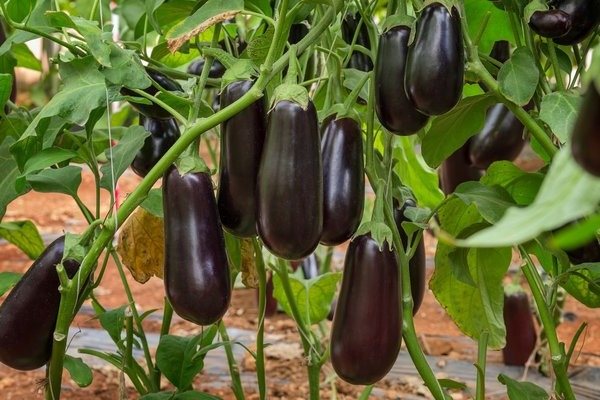

To determine the maturity of eggplant fruits, you need to calculate the ripening time. Early varieties need 90-110 days, medium - 115-130 days, late - 130-140 days. These dates can vary due to various factors, for example, adverse weather conditions, cold summers, can significantly extend the dates, or non-adherence to planting dates can affect.
It is difficult to determine in appearance, they mainly look at the length of the fetus, although this is an erroneous estimate. It is also impossible to determine by color, because it acquires the usual deep purple color immediately. The best way is to try clicking on the eggplant. If it bent and at the same time returned to its original position, then most likely the vegetable is ripe. If you want to extend the shelf life of the eggplant, then you need to sort them out, leaving the healthiest, not broken and undamaged ones in the "back box". It is necessary to store, like all vegetable crops, in dark, cold, dry rooms.
If you adhere to the basic rules and choose the right variety for your climatic conditions, then eggplant can be grown and enjoyed its rich, unusual taste until winter. The most important thing is patience and constant care. It may take you more than one year to choose the right place and the right variety. But the expended effort will be fully justified.
How to feed after planting in the garden
Agrotechnology of eggplant provides for the repeated introduction of fertilizing into the soil.
During the growing season, they will need to be fed. at least 3 times... The first dose of nutrition is applied 20 days after planting the seedlings. The second time you need to fertilize in 3-4 weeks. The third time to feed the beds during the fruiting period.
Mineral dressing
For normal vegetation, the plant needs the following minerals:
- nitrogen - stimulates the growth of shoots (topical feeding at the initial stage of development);
- phosphorus - helps to strengthen the root system, the formation of ovaries and fruits (used at all stages);
- potassium - strengthens the immune system, stimulates growth, makes the culture resistant to temperature extremes and unfavorable weather conditions;
- boron, manganese, iron - increase the period of fruiting.
Among the popular fertilizers of this type: superphosphate, nitrophoska, ammonium sulfate, potassium nitrate.
Organic fertilizers
Manure, which is better rotted, is used for the first and second feeding. Not less nutritious are:
- bird droppings;
- compost.
Fresh manure is not recommended for feeding due to its high nitrogen content.
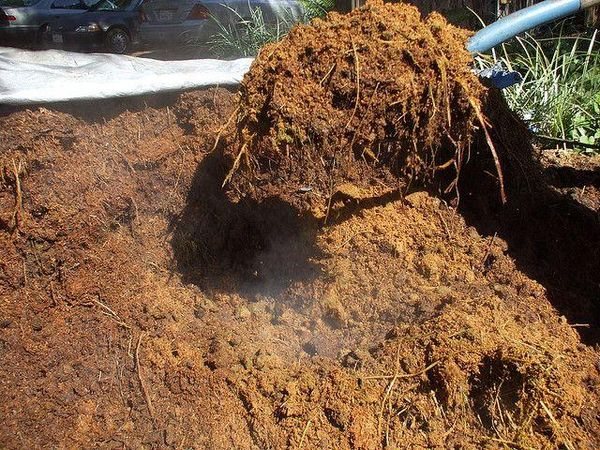

Rotten manure can be used for feeding
What folk remedies to add for growth
Among the popular recipes, there are many effective, time-tested. For example, mushroom infusionthat stimulates the growth of culture. To prepare a working solution, you will need to pour ½ cup of dried mushrooms with a bucket of warm water and leave to infuse for a day.
Ash liquid (1-2 glasses of wood ash per bucket of water) is also popular among gardeners.
And on a par with it, you can put and yeast feedingpromoting the growth of young shoots. To prepare the fertilizer, a kilogram pack of live yeast is used, which is poured into 5 liters of water at room temperature.A day later, the resulting liquid is diluted with water (1:10) and the plants are watered at the root.
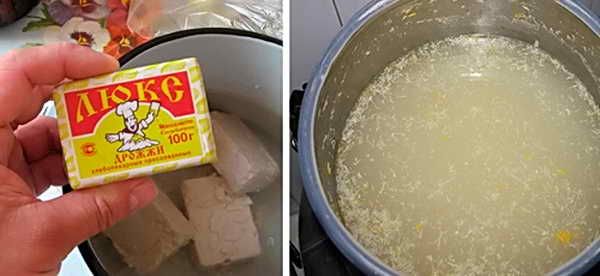

Yeast feeding
For the preparation of fertilizers, various plants are used, the composition of which is rich in valuable trace elements necessary for the active development of eggplants and so that they are plump.
Among the famous recipes:
- glass dandelions pour 2 liters of boiling water and cover with a lid, after 3-4 hours add 7 liters of water and use for feeding;
- pharmacy chamomile (1 glass) pour 1 liter of hot water, insist for a day, dilute with 9 liters of water;
- shredded eggshell pour a bucket of water and insist for 1-2 days, after which you can put the solution in the hole or water the plant.
How to properly care for your culture?
Eggplants are demanding on growing conditions, but they do not need special care. It is important to water them on time, feed them and protect them from pests.
Lighting
Eggplants need 12 hours of daylight. If the light is less than 12 hours, the plant slows down, does not develop, and the fruits do not form.
Illumination is also not allowed for more than 12-14 hours. With too long daylight hours, eggplants begin to intensively increase the green mass, not giving flowers and ovaries. Therefore, there should always be a covering material at hand that will help limit the access of light to the plants.
Temperature regime
For active growth and fruit formation, eggplants need a certain temperature regime. When the temperature drops below a certain minimum, the development of the plant stops.
Optimum temperatures:
- soils - from +16 to +18 ° C;
- daytime - from +18 to +24 ° C;
- at night - from +15 to +18 ° C.
Today growers offer varieties that can grow and develop normally at an average daily air temperature of + 15 ° C.
The culture is extremely negatively affected by:
- prolonged drizzling rains;
- lowering the temperature to +12 ° C - this leads to the dropping of flowers and ovaries.
If the temperature drops below +12 ° C, the plant dies. To protect the eggplants from death, during the cold snap, plantings are watered with warm water or covered with a covering material.
Watering
Eggplant is a moisture-loving crop. Both the development of the plant as a whole and its yield depend on the correct watering.
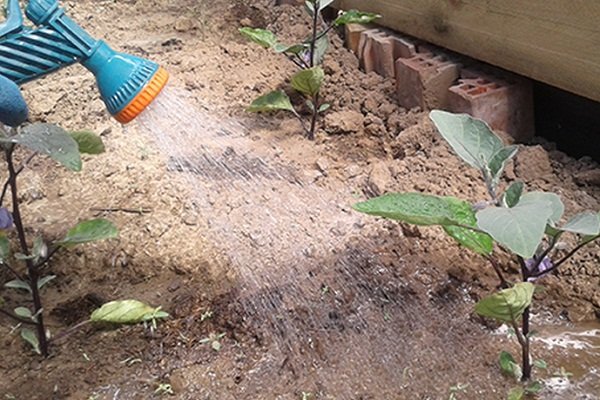

Eggplant watering rules:
- Plantings are watered only with warm water. In the south, the water can be heated in the sun. In other regions, water for irrigation is artificially heated. The optimum water temperature is +25 ° C.
- Eggplants are never watered from above, only at the root. The ingress of water on the leaves has an extremely negative effect on the health of the plant.
- If eggplants are grown by the seedling method, then the first time the plants are watered 10-12 days after planting in the ground. In hot and dry weather - after 7-8 days.
- The soil should always be moist. But the humidity should not exceed 65-70%. Eggplant roots do not tolerate high soil moisture.
- When the plant enters the phase of flowering and the formation of ovaries, watering becomes more frequent, the amount of water given to the plant increases. The soil should be moistened up to 20 cm deep. Water the plantings every 5-6 days.
Top dressing
Eggplants actively bear fruit, from each bush, depending on the variety, from 3 to 6-7 kg are removed. Full fruiting is impossible without regular feeding. The frequency of feeding is once every 2-3 weeks.
How to feed eggplants:
- First feeding. Runs under the root. It is carried out 10 days after transplanting seedlings into the ground. The reference point for feeding is the appearance of the first new leaf on the bush. Nitrogen fertilizer is applied. For the first feeding, the preparations "Kemira", "Kristallin", "Solution", "Effecton" are suitable. Take 30-40 g for a bucket of water. The norm of the solution for one plant is 1-1.5 liters. Instead of these fertilizers, you can add ammophos - 150 g are diluted in a bucket of water.
- Second feeding. It is carried out two weeks after the first feeding.A mixture of wood ash and mineral fertilizer is introduced - nitroammophoska or nitrophoska. One bush is applied 20-25 g. The second option is an extract from poultry droppings. Insist 2-3 kg of droppings in a bucket of water. After 2-3 days, the infusion is filtered and diluted in 10-15 liters of warm water. For one bush - 1-1.5 liters of solution.
- Third feeding. In the flowering phase, eggplants are given nitrophos, nitrophoska or diammophos - 40 g per 1 sq. m. During this period, plants are sprayed with preparations containing trace elements, and solutions of fermented herbs. Boric acid can also be used for spraying. In 10 liters of hot water, dilute 2 g of the drug.
Given the multiple harvesting, it will be useful to support the fruiting of eggplants. After the first or second collection of fruits, it is recommended to feed the plants with phosphorus-potassium fertilizers.
Weeding
In the beds where eggplants grow, the soil should always be loosened and moist. Formation of crust and growth of weeds are unacceptable.
Loosen the soil carefully so as not to damage the roots close to the ground. Loosening is carried out on the second day after watering. At the same time, hilling is carried out - they rake the soil to the stem.
Formation of bushes
Low-growing and dwarf eggplants do not need the formation and structuring of the bushes. For other varieties - medium-sized and tall, the formation is carried out when the bushes reach a height of 25-30 cm.
The formation of bushes cannot be postponed, since cutting off large stepchildren injures the plant, can provoke disease and even death.
How to form bushes:
- Examine the center stem. Remove the stepchildren located in the axils of the leaves - up to the first bud. In underdeveloped plants, the first bud can also be cut off. This procedure promotes the active development of stems and roots, the formation of flowers and ovaries. Eggplant's stepchildren grow slowly, so they are cut off once every half a month.
- In early and mid-season varieties that form a lot of ovaries, cut off 20-25% of the flowers. This must be done if the eggplants grow large - weighing from 250 g. A large number of flowers leads to shrinking and underdevelopment of the fruit.
- Medium and late varieties are usually tall, with a large number of spreading branches. Form such plants from 1-2 or 3 stems. On the branches, leave one ovary at a time, pinch the rest, or better, carefully cut off with pruning shears.
When properly formed, a tall bush has 5 to 8 large fruits.
Garter
Tall eggplant bushes are tied to trellises. The trellis method of the garter prevents the mutual shading of the plants.
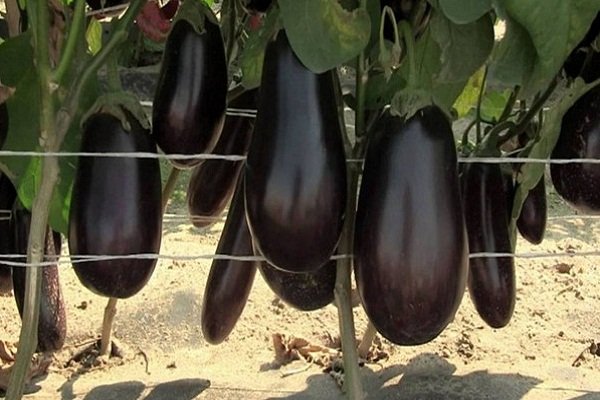

Features of the eggplant garter:
- A plant is tied up near each branch - this is the most fragile part of the stem, which often breaks under the load of fruits.
- Tapestries are made from twine stretched along the bed in several levels. Attach the twine to the stakes installed at the beginning and end of the row.
Harvesting and storage
There are two degrees of maturity of eggplants - biological and technical. The first ones are ripe, but still tasteless, the second ones are good for eating.
Only ripe fruits are harvested from eggplants - in a state of technical ripeness, and overripe and unripe are not suitable - they are tasteless.
Features of collecting and storing eggplants:
- Unlike many crops, eggplants cannot be plucked from unripe fruits - they will no longer become ripe and tasty.
- Eggplant harvesting begins 30-40 days after the end of flowering.
- The fruits should become glossy and reach their varietal growth.
- The fruits are cut with pruning shears. After cutting, a stalk about 2 cm long should remain.
- Eggplants do not store for a long time. The shelf life is about a month. They are stored in cellars. It is recommended to wrap each fruit in paper and put it in boxes. You can also store eggplants in plastic bags.
Under favorable storage conditions and regular bulkheads, fruits can be stored for up to two months.
Unusual cultivation methods
Sometimes eggplants are grown in separate containers - bags, containers, barrels with a volume of at least 5-10 liters. This allows you to keep the plant in greenhouses until the onset of stable heat, and then take them out into the open air, making room for other crops. In such a volume of soil, eggplant will not drain the soil in anticipation of heat. And it can be grown until the end of the season without transplanting, and, if desired, transplanted by digging planting holes according to the size of the soil and roots in bags. At the same time, the plant does not get sick and calmly continues to grow.
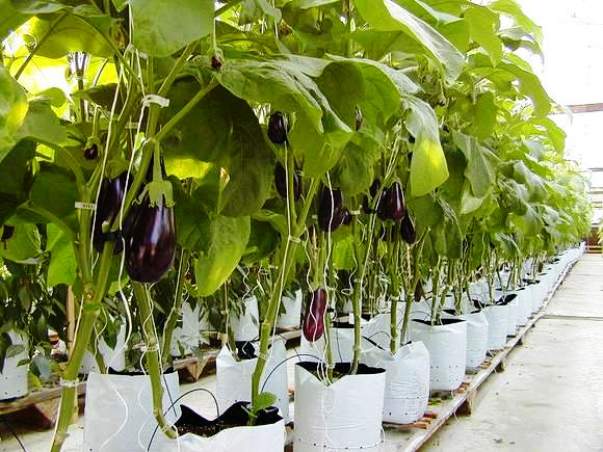

Eggplants can be grown in separate large containers
The advantage of this method is that the soil in the container will warm up much faster than in the garden and greenhouse after winter, and this is important for eggplants.
Minuses:
- the method is more time consuming and costly than conventional cultivation;
- the soil dries up much faster than in the massif, therefore constant watering is required.
Sowing dates for seedlings ↑
Eggplants are grown regardless of the region only through seedlings. Sowing can be carried out simultaneously, and planting, depending on the readiness of the seedlings. Tentatively, they start sowing seeds from February 20 to March 15 inclusive. The readiness of seedlings for transplantation in early eggplants is 45-55, in middle ones 55-70 and in late 70-80 days.
The sowing time can be calculated using the countdown method. At the nearest weather station or according to media reports, find out the onset of a stable warm period and count the time from it in the opposite direction. For example, stable weather begins on June 1. From this date, 55 days are subtracted for early eggplant and the date is 7 April. Therefore, sowing of early varieties and hybrids can be started from April 3 to 10, the same calculation is carried out for medium (counting 70) and late (80 days). The disembarkation can be accelerated or slightly delayed if the weather is changeable.
Harvest
The fruits are harvested before they are fully ripe. At this time, their seeds are small, the pulp is tender, without bitterness. In central Russia, the first fruits in the open field are usually harvested after July 20.
Eggplant usually reaches maturity two to three months after planting, more specifically 60 to 80 days, depending on the variety you are growing and the climate. When ripe, the fruits become firm and shiny.


It is better to cut the eggplants with pruning shears or sharp garden shears, as their stalks are lignified and very strong.
If in the fall there are many small unripe fruits left on the plants, the bushes can be dug up and placed in a greenhouse. In the event of a cold snap, cover them with foil and do not forget to water. The fruits will grow and grow in size.
In a dry room, eggplants are poorly stored - they wrinkle. It is best to store them in an open plastic bag in a cool place.
Features of culture
Eggplant belongs to the Solanaceae genus, its homeland is the southern countries. Therefore, this vegetable requires warm conditions for fruit ripening. Compared to other representatives of this genus (peppers, tomatoes, potatoes), eggplant is more picky about external conditions, which significantly complicates its cultivation in a temperate climate.
Already at an air temperature of + 20 ° and below, the bushes stop growing, pollination stops. Frost is the greatest danger to eggplant. The bushes planted in the cold period may simply die.
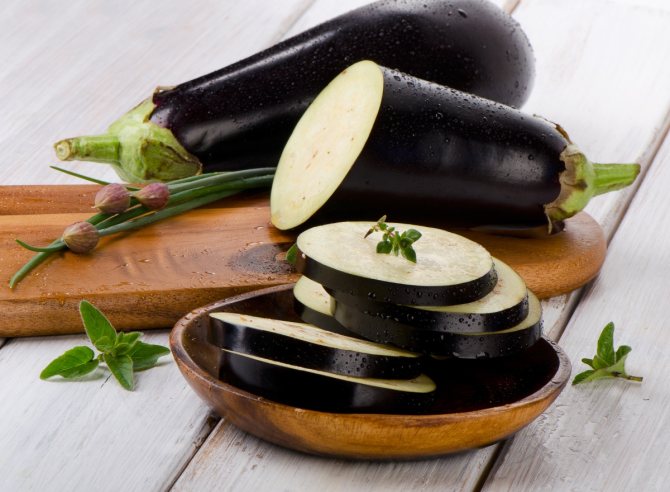

Light conditions also play an important role in fruit development. Most of all, eggplant loves when the daylight hours do not exceed 12 hours at high light intensity. It is necessary to give the bushes a sufficient amount of moisture, otherwise the fruits will be deformed, their taste will deteriorate. In addition, during periods of drought, eggplant often falls off ovaries, which seriously reduces its yield.
An equally important role is played by the condition of the land - with a lack of nutrients or growing on heavy soil, it is impossible to get a decent harvest.
Description of the vegetable
Vegetable characteristics:
- Eggplant is a vegetable, a bush can grow up to 1.5 m.
- The leaves are green, sometimes with a purple tint. They are large and rough.
- Both the flowers of the vegetable and the fruits are purple, but there are also varieties of white, blue, purple.
- It blooms in April-September, depending on where it grows.
- Fruits are cylindrical, pear-shaped. The diameter reaches 22 cm.
- The weight of 1 fruit sometimes reaches 1000 grams.
- The fruits are harvested in late summer - mid-autumn.
Subtropical and temperate climatic zones are best suited for growing this crop.
For eggplants to grow well and bear fruit, it is important to choose the right neighbors for them. So, together with eggplants, you can plant cucumbers, but it is better not to use tomatoes as a neighbor, they have a powerful and deep root system that will pull all the minerals out of the soil.
Recommendations for choosing a variety
There are dozens of modern eggplant varieties. It is not easy for a novice gardener to make a choice before growing eggplants.
The following are considered popular today:
- Black Moon;
- Albatross;
- Moor;
- Helios;
- Valentine;
- Maria;
- Solara;
- Delicacy and others.


Variety "Black Moon"
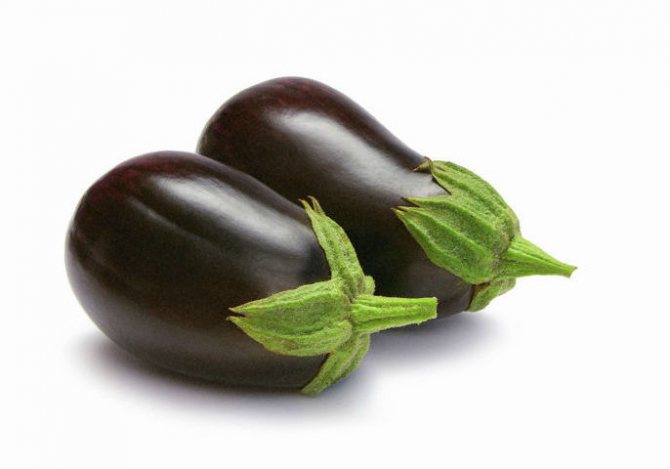

Variety "Albatross"
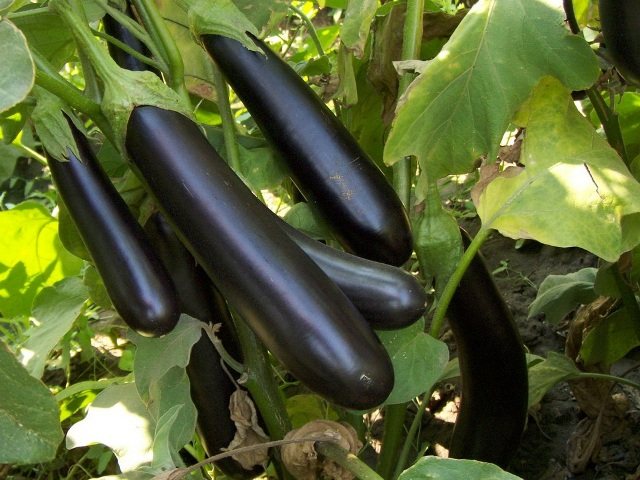

Variety "Arap"


Variety "Helios"
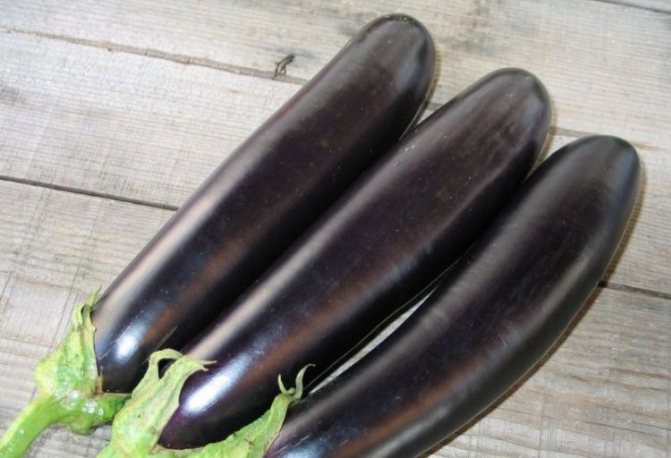

Variety "Valentina"
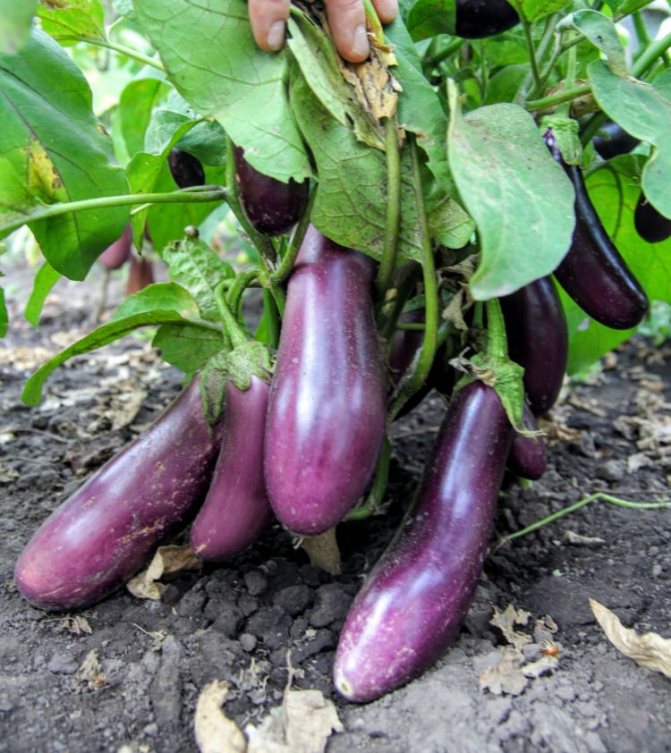

Variety "Maria"
When choosing a variety, every gardener must decide what he wants to get.
Several factors are taken into account when choosing a variety:
- whimsical variety;
- what are the requirements for the soil;
- what place for growing is suitable;
- what kind of care conditions are needed;
- to get a quality harvest.
Temperature regime
The most optimal air temperature for eggplants is 28-30 ° C. But it's okay if the greenhouse is even higher than 35 ° C. But when the thermometer drops below 13 ° C, the plants stop developing.
To monitor the air temperature, install 2 thermometers in the greenhouse: one under the roof and the other just above the ground. Their performance should not differ by more than 3 ° C.
Keep the air temperature in the greenhouse at least 13 degrees
If the air temperature rises rapidly (and this is especially dangerous in the first 3 days after planting seedlings), it must be reduced. To do this, you need to ventilate the greenhouse, shade the vents and water the paths between the beds.
Planting seedlings
The seedlings should be well watered the day before planting. Watering is also repeated immediately before healing the seedlings from the pots. Small holes or furrows are dug in the ground, into which a little water is poured and seedlings are placed. The soil around is slightly compacted, on top it is covered with a small amount of dry peat.
Planting density is determined by the variety - for tall crops, it is recommended to leave a space between seedlings of at least half a meter, when for small crops, 40 cm is enough.
To prevent freezing during cold weather, the film is pulled from above on metal arcs. If the seedlings are planted in May, it is recommended to cover them with two layers of covering material. It will be possible to remove it only by mid-June, when the weather is favorable. Before that, the bushes should be protected from the cold, carefully monitor the air temperature and, if necessary, cover them.
